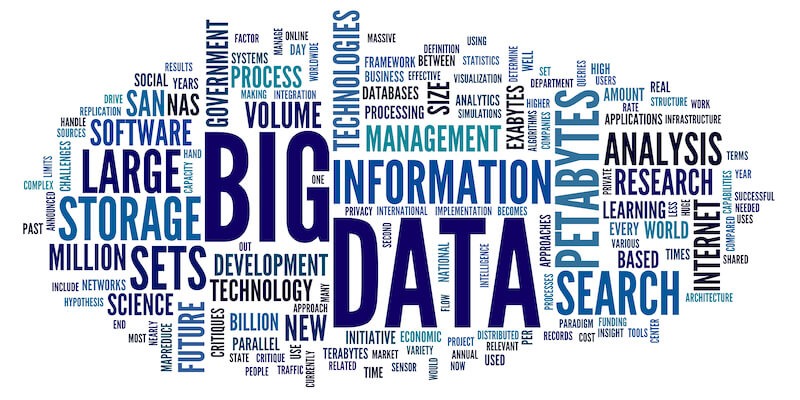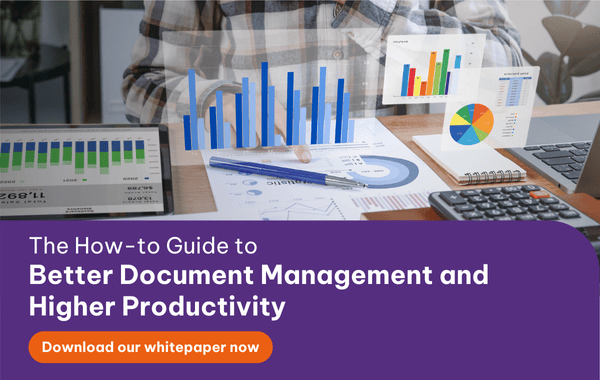In today’s digital economy, companies have access to more data than ever before. This information serves as a foundation for making key business decisions. Companies must invest in data management systems that increase visibility, reliability, and security to ensure that employees have the necessary data for decision-making.

Index
- Data vs Information
- Data management vs Information management
- Challenges of data management
- Challenges of information management
- Data management and information management practices
- Data management tools
Data vs Information
|
|
Data |
Information |
|
Meaning |
Data is raw, unorganised facts and figures that need to be processed. |
Information is the output of processed data. |
|
Characteristics |
Data is an individual unit that contains raw material and doesn't carry any meaning. |
Information is the product and group of data that collectively carry a logical meaning. |
|
Dependence |
It doesn't depend on information. |
It relies on data. |
|
Peculiarity |
Vague |
Specific |
|
Measuring unit |
Measured in bits and bytes. |
Measured in meaningful units like time, quantity, etc. |
Data is unrefined facts and figures. Data can be something simple and seemingly random and useless until it is organised.
Read more: Everything you need to know about data lakes
Data can take many different forms, including numbers, letters, sets of characters, images, graphics, etc. Measuring units of data are Bit, Nibble, Byte, kB (kilobytes), MB (Megabytes), GB (Gigabytes), TB (Terabytes), PT (Petabyte), etc.
There are two types of data, qualitative and quantitative.
- Qualitative Data: When the categories included in data are distinctly sorted under observation and represented using natural language.
- Quantitative Data: a type of numerical quantification that involves counts and measurements and may be stated numerically.
Information is what you get after processing data. Data and facts can be analysed or utilised to learn more and draw a conclusion. In other words, accurate, systematised, understandable, relevant, and timely data is Information.
Unlike data, information is a meaningful value, fact, and figure which could derive something useful.
Information may be interpreted and transmitted by using a variety of encoding techniques. Information encryption is also used to improve security during transmission and storage.
Data management vs Information management
Information management refers to a program or system inside an organisation that controls the procedures that regulate the structure, processing, distribution, and use of data. For the objectives of business intelligence, information management is essential.
The information management system's structure must be capable of managing information over its entire life cycle. This is good for all types of data sources and formats, including physical documents and digital records. This information must also be accessible through many channels, allowing individuals who require it to access it via mobile phones and computers from anywhere in the world.
In contrast, data management is a subset of information management. Data management ensures that the information a business has is accurate, available, secure, and complete. The process involves various techniques providing that there is control over data from the time of its creation until the time of its deletion.
Read more: When Does Your Business Need a Data Management Platform?
Challenges of data management
1. Data governance
The responsibility of data governance is to establish rules and regulations for an organisation's information state. A data governance framework is similar to a constitution in that it assists in the application of policies, regulations, and laws.
An organisation-wide data governance plan should be in place to comply with industry-specific standards and requirements.
Read more: Building a Healthy Data Culture: 7 Factors to Consider
2. Data security
It is one of the most challenging obstacles for them to overcome when compared to other data problems.
Data is an important asset that is obtained after researching and allocating. It includes sensitive information that might affect the business as well as the responders in many ways.
Data breaches may be avoided by properly securing your data with cutting-edge technology and identifying how and by whom this data can be accessed.
The usage of data security specialists is required for data management. Their objective is to prevent unauthorised access and to look for unintended movement, deletion, or other obstructions.
Read more: How to protect your data when employees leave
3. Multiple data storages
This is one of the most serious issues that companies face. Large corporations may end up with dozens of business solutions, each with its own data repository, including databases, CRM, ERP, etc.
Having this much data storage leads to a considerable barrier that must be properly addressed to examine and manage it.
An organisation's primary priority should be to create a single source of truth for its data by eliminating data silos and connecting data from users, products, and suppliers.
Challenges of information management
1. Collecting information
Without collecting information, it is impossible to share it. Information can be collected in numerous ways such as transaction records, surveys, contests etc.
For example, in the professional services industry, it is common for employees to fill out questionnaires about the work they perform and their clients' needs. What is important is that the information gathered is both relevant and correct.
2. Making information available
Making data available is an issue that frequently causes problems for businesses. It's one thing to gather data; it's quite another to make it publicly accessible. Increasing personal communication through the use of interdepartmental teams is one method. As a result, people are more likely to share their personal expertise with others.
Using technology is another method for sharing information. Databases may be used to offer information to people all around a company. This allows an organisation to have access to information about marketplaces all around the world. Databases, on the other hand, need a substantial financial investment in order to be effective.
3. Ensuring information is used
The only remaining problem is ensuring that the information is accessible and used after it has been collected and made available. It is necessary to establish information-sharing procedures that are simple and straightforward to ensure that information gets accessed. For example, a database should be user-friendly. It is critical to demonstrate to employees that there are clear benefits to using that accessible information.
Read more: Key Processes & Productivity Improvement with AI
Data management and information management practices
1. Easy to use
An information management system must be easy to use. If the user interface isn’t well-designed, managers and employees may get frustrated and find other, non-sanctioned ways to share information, which means that they won’t follow security protocols. Addressing usability concerns early also means fewer updates to the system later.
2. Simplify access to both old and new data sources
More data generally means better predictions, so the more data your business analysts and data scientists have access to, the better result is. By accessing more data, it's simpler to swiftly evaluate which data will best predict an outcome.
3. Scrub data to improve the quality of the existing system
Up to 40 per cent of all strategic processes fail because of poor data. With a data quality platform designed around data management best practices, you can incorporate data cleansing right into your data integration flow. Pushing processing down to the database improves performance. It also removes invalid data based on the analytic method you’re using and enriches data via binning.
Share metadata across data management and analytics domains
A shared metadata layer allows you to repeat your data preparation steps with consistency. It encourages cooperation, offers lineage information on the data preparation process, and makes model deployment more straightforward. Better productivity, more accurate models, faster cycle times, greater flexibility, and auditable, transparent data will all be noticeable.
Read more: Step Up Your Data Game with 9 More Data Management Best Practices
Data management tools
The most widely used data management tools are produced by the industry's largest software companies, whose experience ensures a higher level of performance, security, efficiency, effectiveness, data redundancy elimination, and privacy, which is critical for companies that entrust their entire organization's data to third parties.
Here are some data management tools on the market.
1. Microsoft Master Data Services
This platform includes a suite of services that enables users to manage a master set of an organisation’s data. Data can be organised in models, it can be updated by creating rules, and it can include access controls to authorise who updates the data.
2. IBM Infosphere Master Data Management Server
A comprehensive tool that helps manage enterprise data to present it into a single trusted view and deliver analytic capabilities. It includes a security system, transaction control, multi-domain support, event management and data quality analysis
3. Tableau
Interactive data visualisation solution that helps users see and understand data. It helps simplify raw data into an easily understandable format for smart data analysis. Visualisations are created in the form of dashboards and worksheets through its key features that include data blending, real-time analysis, and data collaboration.
4. DataBelt
DataBelt is an all-in-one solution leveraging modern technologies, namely machine learning and robotic processing, to support companies to overcome challenges associated with data governance. Its open API architecture and data crawler support the indexing, classifying, and storing of both structured and unstructured data in a secure data lake.
All in all, data and information management (DIM) allude to the arrangement of individuals, procedures, and advancements supporting the creation, assortment, stockpiling, misuse, and removal of data resources. Hence, it includes strategies, systems, and best practices to guarantee that information data is reasonable, genuine, obvious, open, and interoperable.
At TRG International, we offer DataBelt, an all-in-one solution leveraging machine learning and robotic processing to support you to overcome challenges associated with data governance.
 English
English  Vietnamese
Vietnamese 



